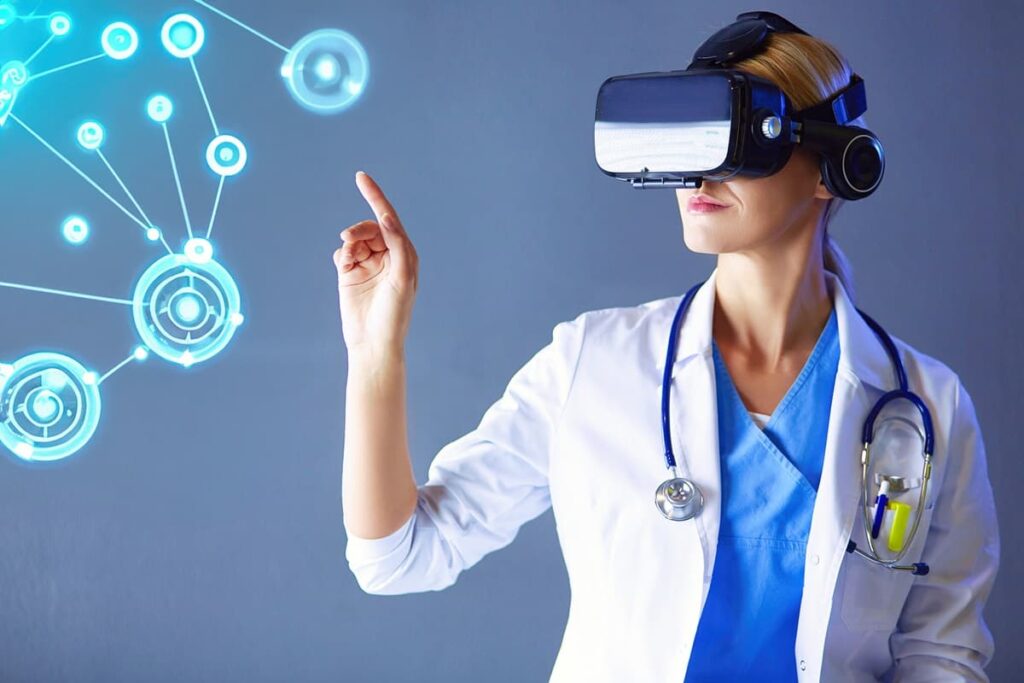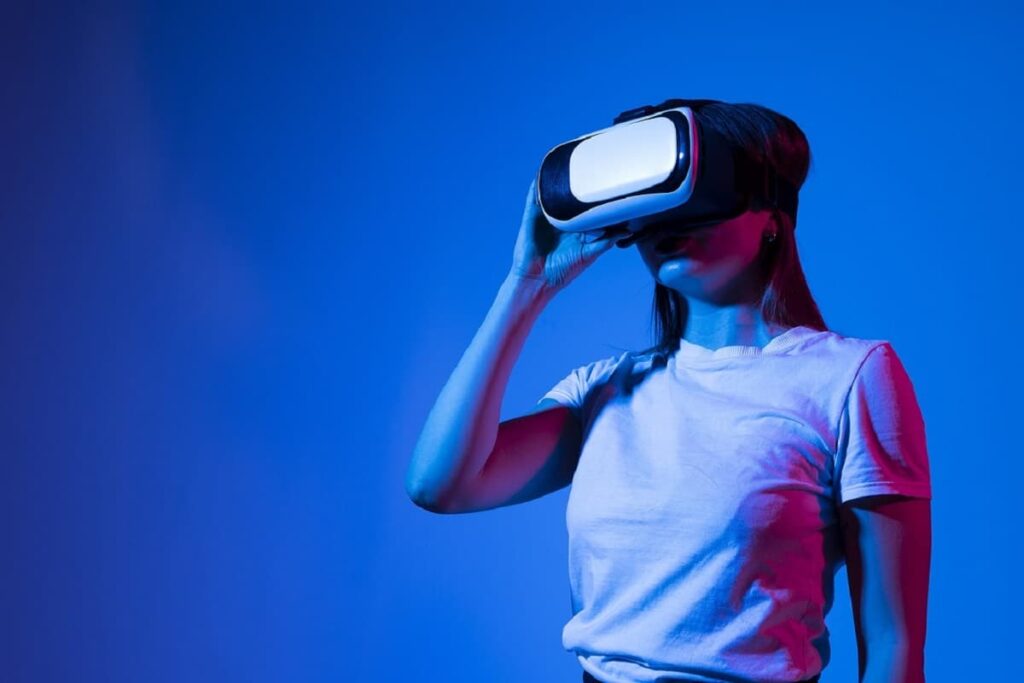Labster – Science Labs in Virtual Reality
Table of contents

If artificial reality (AR) and virtual reality (VR) were two college students who just graduated, one would be much further along in their career than the other. Augmented reality has been making some solid strides into enterprise applications. At least two larger stocks we’ve covered – PTC Inc. and TeamViewer – are now offering enterprise augmented reality platforms with growing revenues and a steadily increasing number of corporate clients. Then, there’s virtual reality.
Big news yesterday in the virtual reality world with Finnish startup Varjo announcing their “human-eye resolution” headsets made possible by a technique called foveated rendering which only applies the high resolution where it’s needed. That’s great we have higher-resolution hardware, but what about real virtual reality enterprise applications that extend outside the world of VR gaming?
During the first wave, when virtual reality headsets finally hit the market, investments focused on their potential as entertainment devices. Similarly, in the peak year of 2016, venture capitalists pumped $857 million into VR startups, largely with the hope that this hardware would soon make it into consumers’ living rooms.
VR started out as a solution looking for a problem. They built it then nobody came, aside of course for niche applications. There has been no shortage of interesting ideas we’ve written about before. Data visualization, drug discovery, architecture, these are all areas we’ve looked at where enterprise VR applications are being developed. Then, there’s education. A startup called Labster hopes they’re in the right place at the right time with a platform that helps provide training for higher education institutions, high schools, and professional applications.
About Labster
Founded in 2011, Danish startup Labster has taken in $43.7 million in disclosed funding to develop fully interactive advanced lab simulations that take place in virtual reality. GGV Capital led their last funding injection, a $9 million venture round that closed this past summer. This round was significantly smaller than Labster’s previous $21 million Series B, which closed in April of 2019. At first glance, it also contrasts sharply with the momentum toward EdTechs that has seen companies like MasterClass, Coursera, and reportedly, Udemy raising nine-figure rounds.
On the other hand, this is the first round that Labster has conducted during the Covid-19 pandemic, an unfortunate reality in which many companies have seen their ability to raise funds reduced. EdTech unicorn Duolingo’s April round was also short. Funding aside, the usage of Labster’s VR product has increased fifteen-fold since March of this year, as the company continues to build valuable partnerships with educational institutions while showing a strong potential for growth.
Update 04/05/2022: Labster has raised $47 million in funding to support growth opportunities worldwide. This brings the company’s total funding to $150.5 million to date.
About Labster’s Virtual Science Labs
The company’s virtual science labs have proven to be extremely popular with educational institutions across the globe that use them to teach both elementary and advanced level science. Labster’s been slowly increasing their customer base over the years and it now contains 1,000+ universities, 3,000 high schools, and more than 3 million students. Today, they’re benefiting from a surge in e-learning interest fueled by ‘The Rona.“
Labster offers a range of simulations on topics that extend outside the science lab into physiology, chemistry, biology, and just about any other science-related topic you can think of. The more than 150 simulations on offer have all been built on the same VR platform, and Labster can add new ones to its catalog fairly quickly, even designing simulations-on-request for individual client needs.

The reality is that real-world labs are expensive to build and maintain for educational institutions, however, it is accepted by most educators that they are a highly effective way of teaching physical principles. While virtual labs may provide a cost benefit for education providers, there’s no substitute for hands-on learning. Perhaps where the company offers the most value is when its products can be used to bring disadvantaged students something that approaches a true lab experience.
Labster’s Progress in Education
Labster’s testimonial page lists an impressive range of educational institutions that the firm has partnered with, from small schools in the UK right up to some of the biggest universities in the USA. Now, with a proven track record of delivering VR labs on relatively small scales, it appears that the company is about to take the next step by signing agreements with school boards.
The most recent of these has been in The Golden State. A few months ago, the company landed a deal with all of California’s community colleges during the pandemic. The partnership added 2.1 million students to Labster’s customer base, which the company says has also been bolstered by a broader growth in annual license deals and partnerships.
Then there’s the pandemic push for distance learning. Some of the biggest international organizations in the world, including the World Bank, are encouraging school authorities to deploy EdTech solutions while students are unable to attend school, and as a result, the EdTech market is booming. According to CB Insight’s data concerning the state of EdTech venture capital activity, startups in the sector have already surpassed their 2019 venture capital dollar tally and are on track to set a new record in 2020.
Labster occupies a strange place between these currents. It’s true that their offering adds value for developed school systems and relatively wealthy universities: institutions that already possess the technological hardware and knowledge to use VR systems. On the other hand, it’s difficult to see VR labs becoming widespread outside developed markets unless VR hardware becomes ubiquitous. This brings up the bigger topic of how pervasive we can expect virtual educations to become.
A Virtual Education
Anyone living on the West Coast knows how you can get your bachelor’s degree on evenings and weekends from the University of Phoenix, the biggest private education provider with peak enrollment of over 400,000 students. Distance learning has been on offer for decades now. The question is, where can virtual reality be applied in such a manner that both student and school prefer that method of teaching? Just because you offer VR delivery doesn’t mean your students will find that it improves the educational experience.
Studies have shown that using VR as a delivery mechanism activates certain parts of the brain when it comes to learning that is similar to how someone learns in real life. In other words, learning a task in VR can be as effective as if you were doing the task in real life. That’s why Mersion just raised $20 million in funding for their corporate training courses. (Unfortunately, they are also catering to the D&I charlatans, people whose existence actually subtracts value in workplaces.) You can bet that corporations will want to see an ROI on the investment they make in VR, but will educational institutions such as high schools or universities require the same? Even more importantly, how can we demonstrate the VR training method betters the learning experience for students?
Demonstrating the value of VR in education is paramount to Labster’s mission, which is why they’ve conducted an impressive array of research which has been published in well-respected educational journals. Thus far, the research focus of the company has been on investigating the efficacy of VR environments in education, particularly at the high-school level. Jenny Lee, a Shanghai-based partner with GGV, and who will shortly take a board seat at Labster, has expressed interest in how automation of virtual and AI-based teachers can bridge the gap between K-12 markets and help compensate for the general lack of quality teachers.
Towards this end, Labster has convened a team of researchers to conduct investigations on its platform. Indeed, in many of these research studies, the platform itself is used as a research tool and educational institutions are offered discounts if they participate. In this way, Labster effectively harnesses a growing appetite for e-learning tools, while simultaneously building credibility into the intellectual basis of their offer. This brings up the bigger topic of how pervasive we can expect virtual educations to become.
Conclusion
We recently discussed how both virtual reality (VR) and augmented reality (AR) have disappeared from Gartner’s Hype Cycle, largely because wide-scale enterprise implementations seem to be lacking. Sure, we’re seeing some interesting use cases pop up like data visualization or drug discovery. But VR needs more than nifty use cases, it needs some real traction outside the meaningful progress being made in healthcare applications such as mental health. VR education may be making a pandemic pivot but it remains to be seen if that trend is here to stay.
Sign up to our newsletter to get more of our great research delivered straight to your inbox!
Nanalyze Weekly includes useful insights written by our team of underpaid MBAs, research on new disruptive technology stocks flying under the radar, and summaries of our recent research. Always 100% free.















